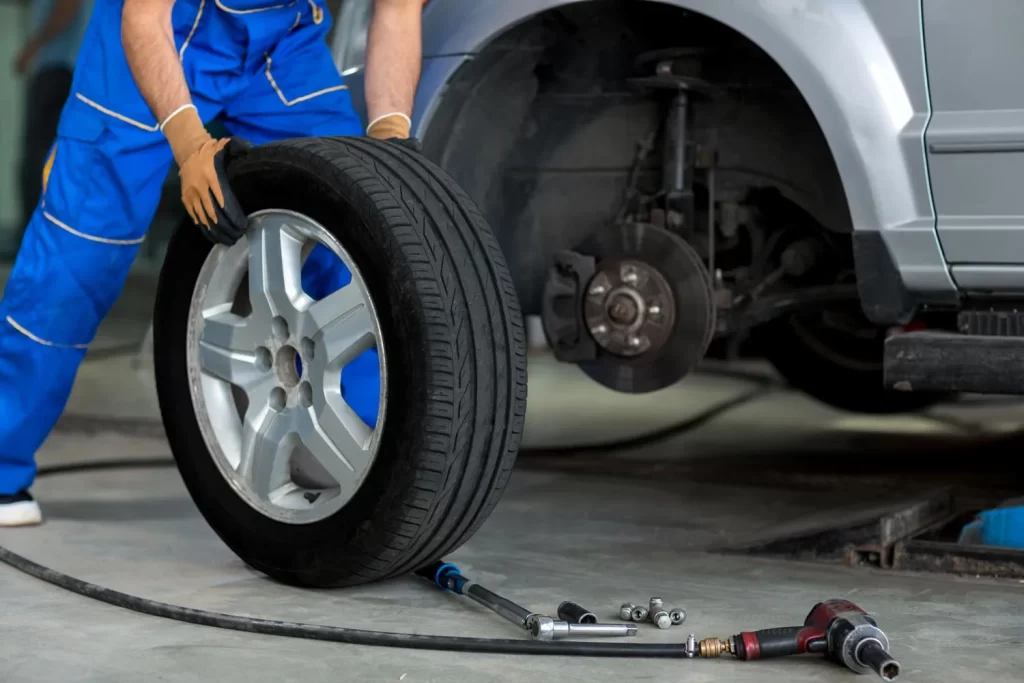How to Handle a Flat Tire: A Simple Guide for Drivers
A flat tire can happen at the worst times, leaving you stuck and stressed. Whether you’re on a quiet road, in a busy city, or about to start a trip, knowing how to deal with a flat tire is important for your safety and peace of mind. This simple guide will show you how to handle a flat tire, from what to do right away to how to prevent future problems.
Recognize the Signs of a Flat Tire
Before you can deal with a flat tire, you need to recognize the signs. Common signs include:
• Sudden or Quick Loss of Pressure: The car might feel unstable or hard to steer.
• Flapping or Thudding Noise: A flat tire often makes a sound that’s different from normal road noise.
• Vibration: You might feel shaking or vibrations in the steering wheel or seat.
• Warning Light: Many cars have a Tire Pressure Monitoring System (TPMS) that lights up if a tire is low.
Find a Safe Location
If you think or know you have a flat tire while driving, it’s important to stay safe. Stay calm and don’t panic; keeping calm will help you make better decisions. Signal and carefully pull over to the side of the road or into a safe area away from traffic. Park on a flat, stable surface if possible, as this makes changing the tire easier. Avoid parking on slopes, loose gravel, or soft ground, which can make the job harder.
Prepare for Tire Change
Before you start changing the tire, gather your tools and get ready. You’ll typically need a spare tire, a jack, a lug wrench, and possibly a wheel chock. Some cars come with a tire-changing kit that includes these items. Make sure the parking brake is on to keep the car from moving. If you have wheel chocks, place them behind the wheels for extra stability.
Loosen the Lug Nuts
With the car parked and the parking brake on, start changing the tire. If your car has a hubcap or wheel cover over the lug nuts, remove it carefully. Use the lug wrench to loosen the lug nuts by turning them counterclockwise. It’s easier to loosen them while the car is still on the ground, but don’t remove them completely yet.
Lift the Vehicle
Once the lug nuts are loosened, position the jack under the car’s jacking point, usually marked in your car’s manual. This point is often near the wheel you’re changing. Use the jack to lift the car until the flat tire is off the ground. Lift the car high enough to easily remove the flat tire and put on the spare.
Remove the Flat Tire
With the car lifted, you can now remove the flat tire. Finish removing the loosened lug nuts and keep them in a safe place, as you’ll need them for the spare tire. Gently pull the flat tire off the wheel hub and set it aside. Be careful, as it might be heavier than you expect.
Install the Spare Tire
Place the spare tire by lining it up with the wheel hub and sliding it onto the hub. Put the lug nuts onto the bolts and hand-tighten them as much as you can. Make sure they are secure but not fully tightened yet. Carefully lower the car using the jack. Once the car is back on the ground, remove the jack and use the lug wrench to tighten the lug nuts in a crisscross pattern. This ensures an even fit. Tighten them securely but avoid overtightening.
Finish Up
After putting on the spare tire, put the hubcap or wheel cover back if applicable. Store the flat tire, jack, lug wrench, and any other tools back in your car. If your spare tire is a temporary or “donut” tire, check its speed and distance limits in your car’s manual. Plan to visit a repair shop as soon as possible to have the flat tire repaired or replaced.
Get Your Flat Tire Repaired or Replaced
After handling the immediate situation, take your flat tire to a repair shop. Depending on the damage, the tire might be repairable or need replacing. It’s also a good idea to have your car’s alignment and balance checked after a tire change, as improper alignment can lead to uneven tire wear.
Prevent Future Flat Tires
To help prevent future flat tires, follow these tips:
• Check Tire Pressure Regularly: Make sure your tires are properly inflated. Correct inflation helps prevent blowouts and improves fuel efficiency.
• Inspect Tires for Wear and Tear: Regularly look for signs of damage like cracks, bulges, or objects stuck in the tire.
• Drive Carefully: Avoid potholes, sharp objects, and other road hazards that could damage your tires.
• Rotate Tires Regularly: Follow your car’s recommendations for rotating tires to ensure even wear.
Conclusion
Handling a flat tire can be stressful, but with the right knowledge and preparation, you can manage the situation safely and effectively. By following the steps in this guide, you can handle a flat tire on your own or know what to expect if you need professional help. Staying calm, being prepared, and taking care of your tires will help minimize the inconvenience and keep you safe on the road.


